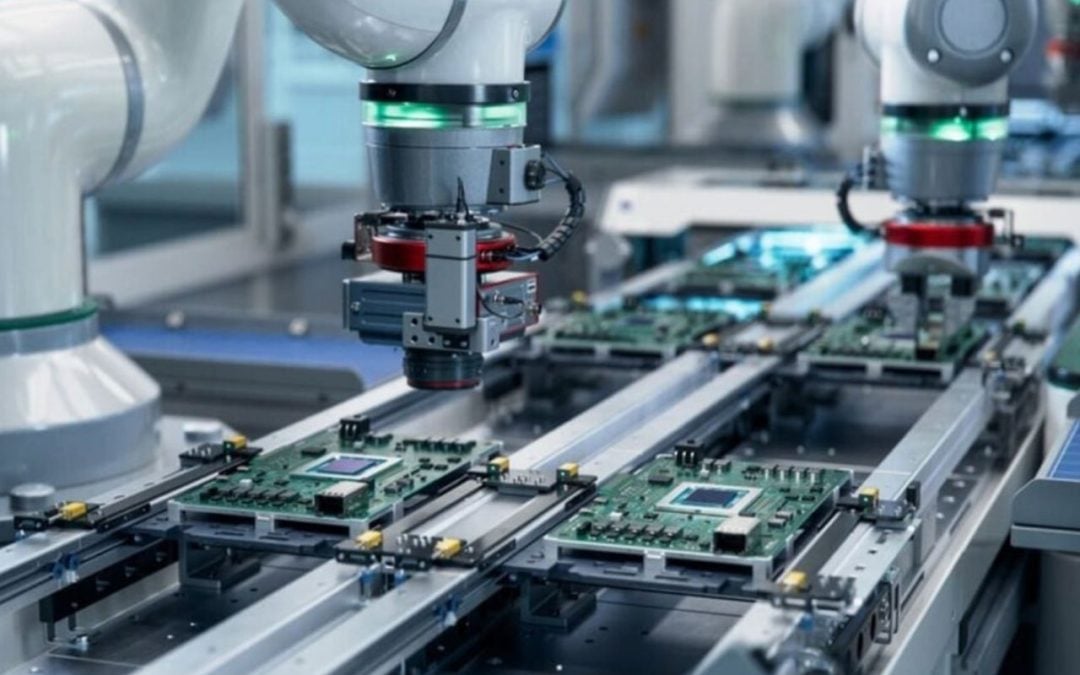Synopsis: Small-cap electronic component makers like Schneider Electric Infrastructure, RRP Semiconductor, and Shilchar Technologies have delivered ROCE and ROE above 40%, reflecting superior capital efficiency, robust profitability, and strong long-term growth potential in India’s thriving electronics manufacturing sector.
Investors are eyeing small-cap electronic component manufacturers delivering exceptional ROCE and ROE above 40%, signaling efficient capital use and strong profitability. Such performance highlights robust demand, superior management execution, and rising competitiveness in India’s rapidly expanding electronics manufacturing ecosystem, offering promising long-term wealth creation potential.
What does ROCE & ROE mean? ROCE, or Return on Capital Employed, shows how well a company uses all the money it has both from shareholders and loan lenders to make profits. It tells investors how efficiently the company is managing its total capital. On the other hand, ROE, or Return on Equity, focuses only on the money invested by the shareholders. It shows the profit earned for each rupee invested by the owners of the company.
Both are important because ROCE gives a broad picture of the company’s ability to use its funds wisely, while ROE tells investors about how well their own money is being put to work. Investors can use these numbers to compare companies and decide which one is making better use of its funds to generate profits
1. Schneider Electric Infrastructure
An Indian company that specializes in designing, manufacturing, building, and servicing advanced products and systems for electricity distribution networks. Their offerings include transformers (like medium power, distribution, and special types), substations, switchgear, ring main units, and automation tools such as SCADA systems and protection relays.
Schneider Electric Infrastructure Limited’s stock, with a market capitalisation of Rs. 19,068 crores, fell to Rs. 790.75, hitting a low of up to 1.54 percent from its previous closing price of Rs. 803.15. Furthermore, the stock over the past year has given a return of 13 percent.
The company reported strong financial performance in FY25 with revenue rising 19.5% year-on-year to Rs. 2,637 crore from Rs. 2,207 crore in FY24, driven by robust demand and consistent growth momentum. The 3-year sales CAGR of 20% highlights a stable expansion in its core business operations, reflecting efficient market positioning and scalability.
Profitability improved sharply, with net profit surging 55.8% YoY to Rs. 268 crore, supported by operational efficiency and margin gains. The company’s capital efficiency remains exceptional, with ROCE at 40.9% and an impressive ROE of 74%. Over the past three years, profit CAGR stood at 103%, along with a remarkable 109% CAGR in ROE showing superior capital allocation and value creation for shareholders.
2. RRP Semiconductor
Formerly known as G D Trading and Agencies Limited is a Maharashtra-based Indian company that has shifted from trading to providing Outsourced Semiconductor Assembly and Test (OSAT) services. They focus on high-precision chip packaging solutions, such as Quad Flat No-Lead (QFN) packages, for compact electronics used in sectors like IoT, automotive, medical devices, and industrial applications.
RRP Semiconductor Limited’s stock, with a market capitalisation of Rs. 15,894 crores, fell to Rs. 11,666, hitting a low of up to 1 percent from its previous closing price of Rs. 11,784.40. Furthermore, the stock over the past year has given a return of 11,250 percent.
The company delivered extraordinary growth in FY25, with revenue soaring 8,213% year-on-year to Rs. 31.59 crore from Rs. 0.38 crore in FY24, reflecting a significant operational scale-up and improved business traction. This remarkable turnaround highlights strong demand recovery and effective management execution, marking a breakthrough year in terms of expansion and profitability.
Net profit surged to Rs. 8.46 crore in FY25 against a marginal loss of Rs. 0.02 crore last year, signaling a sharp improvement in margins. Capital efficiency remained exceptional, with ROCE at 80.2% and ROE at 209%, showing superior returns and efficient capital utilization.
3. Shilchar Technologies
A leading Indian manufacturer of transformers, founded in 1990 to produce R-core transformers for electronics and telecom applications. They have expanded into ferrite, toroidal, power, and distribution transformers, along with inductors and custom windings, serving both domestic and export markets (over 40% of revenue from abroad).
Shilchar Technologies Limited’s stock, with a market capitalisation of Rs. 5,010 crores, rose to Rs. 4,440, hitting a high of up to 3.53 percent from its previous closing price of Rs. 4,288.30. Furthermore, the stock over the past year has given a negative return of 11 percent.
The company posted a robust performance in FY25, with revenue rising 56.9% year-on-year to Rs. 623 crore from Rs. 397 crore in FY24, reflecting strong operational growth and improved sales execution. The 3-year sales CAGR of 51% highlights consistent expansion momentum, supported by growing market presence and efficient business strategy.
Profit increased by 59.8% to Rs. 147 crore compared to Rs. 92 crore last year, reflecting strong profitability and cost control. ROCE is at 71.3%, while ROE was 52.9%, indicating efficient use of capital and strong returns for shareholders. Over three years, profit CAGR reached 119% and ROE CAGR was 52%, showcasing sustained value creation and superior capital productivity.
Written By Fazal Ul Vahab C H
Disclaimer

The views and investment tips expressed by investment experts/broking houses/rating agencies on tradebrains.in are their own, and not that of the website or its management. Investing in equities poses a risk of financial losses. Investors must therefore exercise due caution while investing or trading in stocks. Trade Brains Technologies Private Limited or the author are not liable for any losses caused as a result of the decision based on this article. Please consult your investment advisor before investing.


